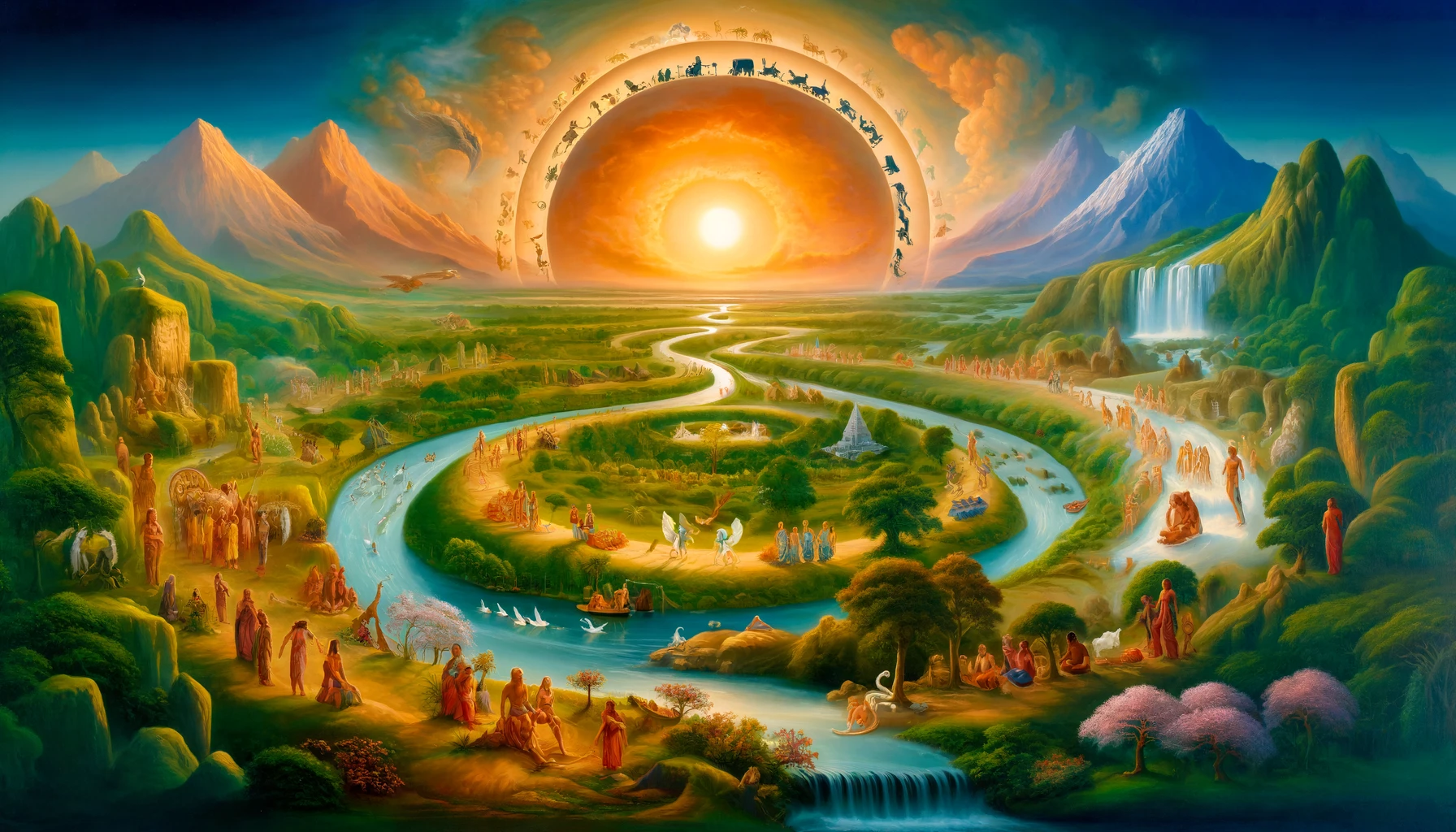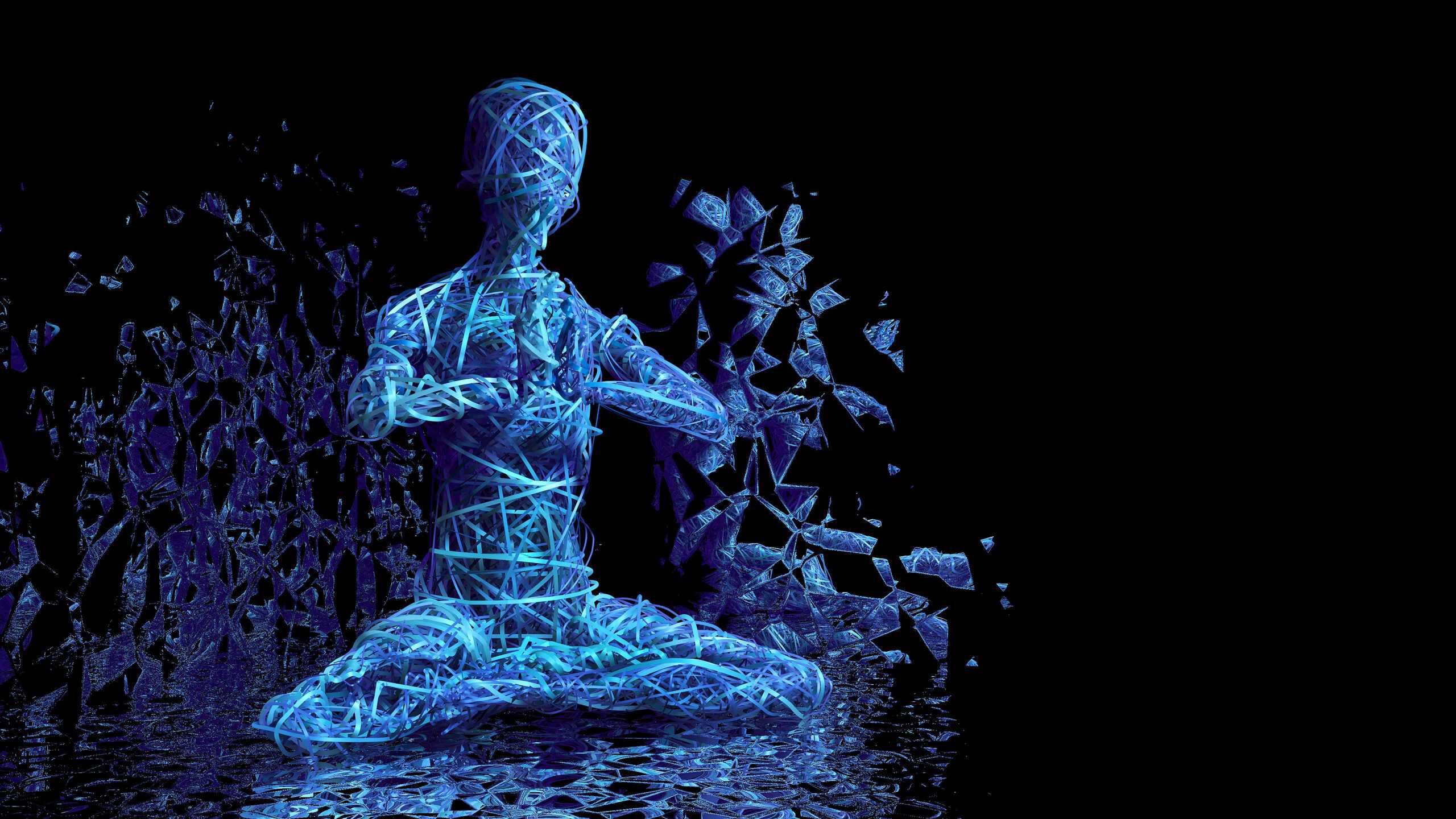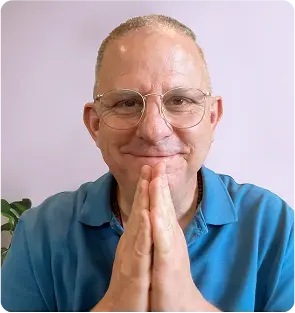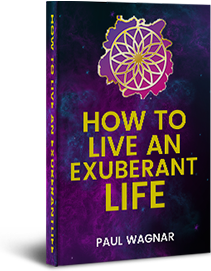Last updated: Aug. 15, 2025
Philosophies on life are innumerable. So many different cultures, belief systems, religions, and other institutional or social factors cause each person to have a unique view and journey in life. While everyone is different, there are efforts to apply labels or categories that make general mindsets or stages of life identifiable and easier to discuss. Two popular labels like this are “karmic” and “dharmic,” Sanskrit terms for concepts held in Indian regions.
I would never force anyone to choose a label for themselves to identify their beliefs. Still, if you’re looking for an opportunity to discuss your mindset and life journey, labels can be the easier way to bridge that gap. These categories can also help you assess what you want out of life and whether your current relationships are healthy. Let’s discover what karmic and dharmic mean and how these mindsets can help guide your life.
What Is Karma?
Many more people in the West have heard of “karma” than “dharma.” You might hear someone warn another person not to do something because it’s “bad karma” or that karma will “come back around.” Because it has been popularized in Western culture, the karmic system is often presented in oversimplified ways, making it easy to approach but hard to truly understand.
“Karma” literally means “action” in Sanskrit. At its most basic, it refers to the sum of your actions and the impressions they leave on your consciousness. Yet karma is not only about visible deeds – it is a vast, intricate collection of memory that shapes perception, decision, and destiny.
In the deeper teachings, karma can be held in up to nine distinct categories, from physical and emotional imprints to subtle energetic, ancestral, and even soul-level memories. Each act, word, and thought generates a trace, adding to these stored layers.
Karma works within a moral and energetic framework, where each moment plants seeds in the fertile field of your consciousness. Holding a door for someone or offering comfort to a friend can sow harmonious seeds, while acts of selfishness or harm create disruptive ones.
Over time, these patterns accumulate – not just in this lifetime, but across lifetimes – influencing circumstances, relationships, and the trajectory of your soul’s evolution.
In its simplest folk interpretation, karma is seen as the guarantee that everything you do will return to you in kind, balancing the scales of the Universe. But the deeper truth is that karma is the architecture of memory itself – the subtle coding that binds you to certain experiences until the patterns are understood, dissolved, and transcended.
When you see karma in this way, you begin to grasp that liberation is not about collecting “good points” for a better rebirth, but about freeing yourself from the weight of stored impressions altogether.
For a more in-depth nuanced discussion on karma and how we can liberate ourselves from it, read my article How To Clear Karma And Transform Your Life.
What Does Dharma Mean?
Not as many people have heard of the word “dharma,” as there aren’t many popular sayings in the West that use the term. It might seem foreign at first, but dharma is actually a concept that is familiar once you grasp a true understanding of it.
“Dharma” is a much more expansive term than “karma.” Dharmic refers to your life’s duty or goal, which is different for everyone and is generally determined by your social class and life situation.
While dharma is certainly a motivation for the structure of Indian culture and society, it is not much different from concepts originated in other religions and belief systems.
Many faiths, including Christianity, believe that physical life on Earth is not the beginning or the end of a soul’s journey but just a point at which humans are tested and given the opportunity to do good or bad things. What Christians do here on Earth directly affects where they believe they’ll end up after death, and they feel their life’s mission is to fulfill their highest purpose, which is very similar to the concepts of karma and dharma in India.
Strictly focusing on dharma alone, though, has its downfalls. For many in India who seek to live a dharmic life, it’s difficult to determine whether strictly staying within the tradition and your social class is enough to fulfill dharma.
Some believe actions taken to stretch beyond the confines of one’s community are necessary to discover one’s true life purpose. As you can see, the dharmic system is much more focused on one’s life overall rather than day-to-day actions like karma.

Karmic vs Dharmic Life: What’s the Difference?
While dharma and karma are sometimes spoken of as if they sit on opposite ends of a spiritual spectrum, they are inseparable currents in the river of a human life. In the simplest sense, karma is the collection of actions and the imprints they leave – the layered memories in up to nine categories – and dharma is the soul’s guiding mission or rightful path.
Your karma is the day-to-day momentum you create, and your dharma is the deeper purpose that momentum is meant to serve.
Not every karmic action will directly express your dharma, yet every action subtly shapes your relationship to it. Ideally, your karma becomes a vehicle for your dharma – the refinement of your daily thoughts, words, and deeds clearing the way for your life’s truest direction to unfold. But here lies the complexity: karma and dharma are so interwoven that what is considered “good karma” for one person could be destructive for another.
A warrior whose dharma is to protect might create harmony by taking up arms, while another soul – whose dharma is to heal or teach – could create inner distortion by doing the same, no matter how noble the intention appears.
The challenge is that dharma is rarely obvious at the start. It is uncovered through self-inquiry, discipline, and the gradual clearing of karmic memory that clouds perception. Until then, a person may generate “good deeds” that are misaligned with their core purpose, unintentionally weaving more karmic threads rather than dissolving them.
Beyond philosophy, “karmic” and “dharmic” also describe two modes of living. A karmic life is reactive, guided by the weight of past impressions, habit patterns, and unexamined desires.
A dharmic life is intentional, aligned with your deepest truth, and lived as a conscious offering to the Divine. Most of us move between these modes daily – the art is in leaning more and more toward the dharmic, so that the karmic layers dissolve and the soul stands unbound.
What Does It Mean to Live a Karmic Life? Understanding Karma & How Your Daily Actions Shape Your Path
As we’ve explored before, the karmic system focuses on the finest details of our daily existence – each action leaves an imprint in the layered memory that forms our karma. This is not just a ledger of “points” but a storehouse that can hold impressions in up to nine categories, from physical habits to emotional tendencies to the most subtle spiritual residues.
Living a karmic life means moving through the world with the underlying belief that every act is transactional, done with an expectation of return. Actions are approached like contracts, and the measure of success is often what you gain in exchange.
In this mode of living, intention is often secondary to outcome. You excel at work to secure higher pay. You extend politeness to neighbors so they will reciprocate in times of need. You drive cautiously to avoid fines and legal trouble. It is a pragmatic, utilitarian worldview, in which actions are valued less for their inherent goodness and more for the benefits they yield.
A karmic life is not about freely expressing your soul’s highest calling – it is about navigating a system of cause and effect in hopes of shaping a favorable future. In its purest mechanical sense, it is indifferent to your personal desires. You may appear generous or responsible, but beneath the surface, every choice is tethered to the calculus of return.
Some even argue that intention is irrelevant, seeing people and situations as tools to be leveraged toward desired ends. For many, this orientation feels natural, even sensible. It aligns with how they were raised, how they were taught to measure value, and how society rewards behavior.
Yet this very mindset can deepen karmic grooves in the memory field, making it harder to shift into a dharmic way of being – one that acts from alignment with truth rather than from the architecture of transaction.
What is Dharmic Living? What Is Dharma and How Does It Guide Your Life Purpose?
While karmic lives are based on contracts and expectations, dharmic lives are about treating life with the view of the bigger picture. Everything is done with an overall view of life and the Universe in mind, making one less attached to the minute details and everyday actions than those who focus on a karmic life.
In other words, actions are not done for the immediate result they will achieve. Those seeking to live dharmic lives do not do a nice thing for a neighbor in order to turn around and immediately ask for a favor. They do not smile at others in order to be treated better, and they don’t help others fix their problems because they want to get something out of it.
Dharmic lives are based on love, truth, and virtue. Actions are done because they are the right actions to be done, because they are based in truth and love. Dharmic lives build themselves around virtue no matter what that means, and they do not expect anything in return. Overall, those who live a dharmic life are idealists-they have their eyes set on the bigger picture and fulfilling their life’s purpose, not necessarily their everyday utilitarian needs and desires.
What Is the Difference Between a Karmic and Dharmic Relationship?
By now, it is clear that the concepts of karmic and dharmic living can be applied to relationships. Seeing karmic as utilitarian and dharmic as idealist can help us understand how these approaches shape families, friendships, and romantic partnerships.
In karmic relationships, connection operates on an unspoken contract – I will love you if you love me back. Each person gives only as much as they are receiving, withdrawing when their needs are not met.
Because the relationship is rooted in expectations and reciprocity, people can be reduced to roles or tools, valued for what they provide rather than for who they are. Affection and commitment may be tied to sexual access, financial support, social advantage, or other forms of utility.
While entering such a relationship might appear consensual, it is often driven by unconscious karmic memory – the pull of patterns formed in this or other lifetimes – rather than a deliberate, conscious choice to align with one’s life purpose. These patterns can bind people together in attraction or conflict, without either person realizing that the bond is sustained more by habit and unhealed memory than by true freedom of choice.
Dharmic relationships, by contrast, arise when two people meet without needing each other to fill emotional gaps or supply material stability. The connection is built on mutual love, respect, and the shared wish to experience life side by side.
While these partnerships may also include intimacy, shared resources, and joyful experiences, such exchanges are not demanded or held as conditions. The deeper aim is for each partner to help the other realize their highest potential – and for both to walk a path toward truth and liberation together.
Because dharmic relationships require a high level of emotional and spiritual maturity, they are rare. Each person must already have done the inner work of self-discovery and healing. These bonds are not for fixing wounds – they are for walking into the light of awakening, free from the contracts of the past.
Karmic vs Dharmic Relationships: Why It Matters for Love & Growth. Are Karmic Relationships Doomed?
As wide as the gap can be between a karmic and a dharmic life or relationship, not all is lost. A karmic relationship can absolutely evolve into a dharmic one. For many people, early relationships are karmic simply because their souls and emotional maturity are still young. In the earlier stages of life’s journey, people often have not yet discovered what they truly need to live in alignment with their deepest truth – and so they relate through the lens of unconscious karmic memory and contractual expectations.
As life unfolds, it becomes more likely for people to seek dharmic relationships, where the bond is rooted in shared purpose rather than in constant exchange.
That being said, a karmic relationship from earlier in life’s journey can transform if both partners are willing to grow. When two people evolve together, they can move from a conditional exchange to a union that is free, supportive, and aligned – each walking their dharmic path side by side.
The challenge arises when one partner is committed to emotional and spiritual maturity while the other is not. If one person’s inner work becomes incompatible with the other’s unwillingness to grow, the relationship may stop serving both.
Mixing karmic and dharmic approaches can create friction – although in some cases, one partner’s dharmic focus can be supported by the karmic patterns of the other, acting as a catalyst for deeper transformation.
But more often, when a partner steeped in dharmic living engages with a partner locked in a karmic mindset, strain is inevitable. If one partner is overly demanding, transactional, or bound by rigid expectations, the relationship can feel oppressive and unbalanced.
This imbalance can manifest as each partner feeling misunderstood, unseen, and unloved. The dharmic partner may feel they have outgrown the relationship, while the karmic partner may feel alienated or rejected. It is not uncommon for each to believe that the other has changed into someone they can no longer understand.
The most important ingredients in navigating these shifts are communication and honesty. When both people remain open about their emotional and spiritual needs, they can maintain a shared understanding of where they each are in their life’s journey. Regular check-ins help address concerns before they harden into resentment.
Best case scenario – two people living karmic lives can inspire one another to rise, transcending their old patterns and stepping together into the freedom of a dharmic life.
Are You Living a Karmic Life or a Dharmic Life? Learning How to Lead a Dharmic Life
If you are currently living with a karmic mindset, shifting into a dharmic life can feel like a steep climb – but it is absolutely possible. I have guided many people through this transformation, helping them reshape their patterns, perceptions, and daily actions so they align with the clarity and freedom of dharmic living.
While it requires learning, patience, and steady practice, the reward is profound – a way of moving through the world with peace, love, and purpose, even in the midst of life’s challenges and stresses.
How to Transition from a Karmic Mindset to Dharmic Living
Self-awareness is the first and most essential step – dharmic living is rooted in conscious choice. It calls for intentional action, mindful presence, and the willingness to examine the karmic memories and habits that quietly drive your decisions.
I always recommend establishing a daily meditation practice to create space for reflection and clarity. This is only the beginning – dharmic living is not a single shift but an ongoing refinement of how you show up in every moment.
If you are unsure how to begin or want to accelerate your shift into a dharmic life, an intuitive reading with me can help you uncover the patterns, relationship dynamics, soul desires, and spiritual gifts that shape your path.
Together, we can illuminate the steps that bring you closer to a life that is not bound by karmic contracts – but led by your deepest truth.
REMEMBER!
You are a beautiful Living Being filled with light and love, born from stardust. You are unlimited potential in every direction. With a focus on discipline, virtue, and your own goodness, you can become as expanded and liberated as you desire.
Pray for others and the Universe prays for us.
If you want to align more closely with your dharma, an intuitive reading with me can help you take specific steps with clarity. You can learn more about sessions with me and how to book HERE.
Q&A
What is the main difference between a karmic and a dharmic life?
A karmic life is shaped by daily actions driven by expectations – a constant exchange where effort is tied to reward. A dharmic life is guided by truth, love, and alignment with the soul’s purpose, free from attachment to immediate outcomes.
How are karma and dharma connected?
Karma is the collection of your actions and the impressions they leave – dharma is your deepest life mission. When actions align with that mission, karma supports dharma, but what is “good” for one person may be harmful for another depending on their path.
What makes a relationship karmic vs dharmic?
Karmic relationships operate like contracts – each person gives based on what they receive, often valuing the other for utility. Dharmic relationships are free of need – they exist from love, respect, and the shared intention to grow toward spiritual purpose.
Can a karmic relationship turn into a dharmic one?
Yes – growth can transform a relationship. When both partners mature emotionally and spiritually, a transactional bond can evolve into a conscious partnership devoted to truth and mutual awakening.
What are the challenges when one partner is karmic and the other is dharmic?
Mixing these mindsets can lead to frustration and misunderstanding – the dharmic partner may feel limited, while the karmic partner may feel judged or rejected. Without shared growth, imbalance can turn the relationship toxic.
How does one begin to live a dharmic life?
It begins with self-awareness and intentional living – examining patterns, acting consciously, and letting go of transactional thinking. Daily meditation and honest reflection help dissolve karmic habits that block alignment with dharma.
What role can guidance play in this transition?
An experienced guide can help you see unconscious patterns, relationship dynamics, and soul-level desires – giving clarity on the steps needed to move from karmic living into dharmic purpose.
Why does living a dharmic life matter for love and growth?
Dharmic living creates relationships and experiences rooted in freedom, not need – allowing both individuals to evolve without holding each other back. It transforms love into a space where both can reach their highest potential.






